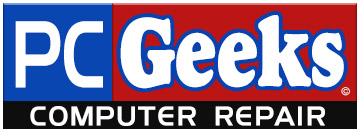The Difference Between Hardware and Software Problems
As technology continues to play an increasingly critical role in our daily lives, it’s essential to understand the difference between hardware and software problems and how to troubleshoot them. These two types of issues can cause frustration, lost time, and productivity loss, and the right approach can make all the difference.
Hardware problems are physical issues with the physical components of a device or system, while software problems refer to errors or glitches within the software or operating system. Troubleshooting these issues requires a different approach, and understanding the difference between the two is crucial. In today’s blog, we’ll go over the two types and ways you can troubleshoot them.

Hardware Problems
Hardware problems can be easy or challenging to diagnose, depending on the severity and nature of the problem. Common hardware issues include malfunctioning keyboards, broken screens, and hardware compatibility issues.
One way to troubleshoot hardware problems is to perform a visual inspection of the device. Check all cables and connections to ensure they’re securely plugged in and free of damage. If a device isn’t turning on or the screen is blank, check the power source and battery to ensure they’re charged. If the problem persists, try running hardware diagnostic tools to identify the issue. These tools can identify and diagnose hardware problems such as memory and hard drive issues.
Software Problems
Software problems can be tricky to diagnose and troubleshoot because they often appear in different forms. Common software problems include system crashes, application errors, and performance issues.
One way to start troubleshooting software problems is to identify the specific error message. This information can provide critical insight into what’s causing the problem. Once you’ve identified the error message, search for solutions online or consult the documentation for the application or operating system. Another way to troubleshoot software issues is to perform a system restore. This action can revert the system to a previous state before the error occurred.
How to Troubleshoot Both
While hardware and software problems have different origins, there are a few general troubleshooting tips that can apply to both. First, try restarting the device or system. This simple action can resolve many software and hardware problems. If restarting the system doesn’t resolve the issue, try updating the software or drivers. Outdated software or drivers can cause hardware and software problems, and updating them can resolve the issue.
In conclusion, hardware and software problems require a different approach to diagnosing and troubleshooting. It’s essential to identify the problem’s origin before taking any troubleshooting action. A visual inspection, diagnostic tools, and error messages are all helpful in identifying hardware and software issues. Restarting the system, updating software, and drivers are general troubleshooting tips that can resolve both types of problems. By understanding the difference between the two, you can quickly and efficiently resolve any issues that arise.
If you’re having issues with troubleshooting your computer on your own, then PC Geeks is here to help make the process easier for you. Our expert team can figure out the problem and fix the issue in no time. Contact us today for more information about our services and pricing!
